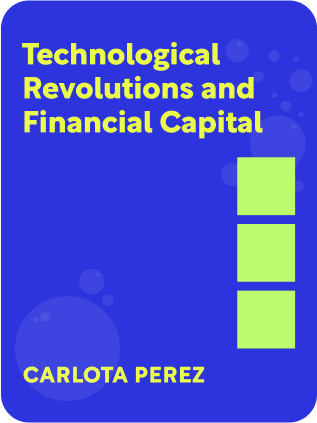

This article is an excerpt from the Shortform book guide to "Technological Revolutions and Financial Capital" by Carlota Perez. Shortform has the world's best summaries and analyses of books you should be reading.
Like this article? Sign up for a free trial here .
What is the first stage of an industrial revolution? How does this first stage lead to later developments?
The first stage of an industrial revolution is irruption. An irruption refers to a sudden forceful rushing in of ideas or technology.
Read more about the first stage of an industrial revolution and what it means.
The First Stage of an Industrial Revolution
It helps to start from the end of the previous revolution, which offers the gestational environment for new innovation.
At the dawn of the new revolution, the previous revolution has played out.
- Society has accepted the new common sense of the prevailing paradigm.
- Firms and society have become conducive to the unfolding of any opportunity compatible with the paradigm (going from n → n+1)
- Socially, these conditions cause inertia and become exclusionary for innovations that are incompatible with the existing framework.
However, the previous revolution approaches the exhaustion of profitable opportunities.
- Core industries encounter market saturation and decreasing returns. Productivity and growth are threatened.
- Firms that have stagnated become receptive to radical innovations.
- An environment with decreasing returns brings idle capital looking for profitable uses.
Keep reading to find out the first stage of an industrial revolution.
Phase 1: Irruption
(Shortform note: irruption is defined as “a forcible and violent rushing in,” as opposed to eruption, which a rushing outward. This reflects Schumpeter’s notion of creative destruction, where the economic structure is revolutionized from within, destroying the old while creating the new.)
The big-bang event offers a visible attractor for investment, sparking the imagination of engineers and entrepreneurs. This technological breakthrough offers new cost-competitive possibilities in a sluggish landscape. This is a 0 → 1 event and the first phase of an industrial revolution.
New products and technologies arise that show future potential.
The powerful firms from the previous revolution will use the innovation as a new lease on life and become testbeds for the new technology.
- For example, the US auto industry (created in the previous revolution of the automobile and mass production) adopted Japanese production methods and microelectronics in both manufacturing and the car itself.
But many innovators are likely to come from outside the prevailing paradigm. They do not hold onto the past and so can explore unfettered.
The new revolution looks to have far higher profit-making potential than the prevailing paradigm. And so financial capital develops a heated love affair with the emerging production capital.
- Old production capital has been facing diminishing returns since Maturity, and financial capital flees from it.
- From the interactions with the new entrepreneurs, the financial world adopts the technology itself.
- Banks were early clients of the telegraph, telephone, and microcomputers.
- The technology enables larger networks of banks.
- Local bank branches developed into national networks when railway and telegraph made it possible.
- Then national networks evolved to international finance when instant global money became possible in the 1970s.
- Financial capital develops new risk capital instruments particular to the era.
- Large-scale railway and industrial projects required more sophisticated investment banking.
- Internet companies requiring relatively small investments gave rise to venture capital in the Information Age.
Financial capital thus enables and spreads the revolution.
Social Tensions in Irruption
The prevailing paradigm is still wedded to the previous revolution during the first phase of the industrial revolution. Thus, tensions arise between:
- the new industries and the mature ones
- People trained in the new technology and people with increasingly obsolete skills
- dynamic regions and stagnant ones
- thriving new industries and the old regulatory system
- countries that ride the wave and those left behind
Unemployment is high, from sources like stagnation and technological replacement.
Perverse price behavior is seen, leading to both deflation in the 1870-80s and inflation in the 1970-80s, depending on the institutional framework.

———End of Preview———
Like what you just read? Read the rest of the world's best book summary and analysis of Carlota Perez's "Technological Revolutions and Financial Capital" at Shortform .
Here's what you'll find in our full Technological Revolutions and Financial Capital summary :
- What happened during the 2000 tech bubble and the 2002 crash
- The 5 technological revolutions that reshaped society since 1771
- How you might be able to predict and prepare for the next technological revolution






